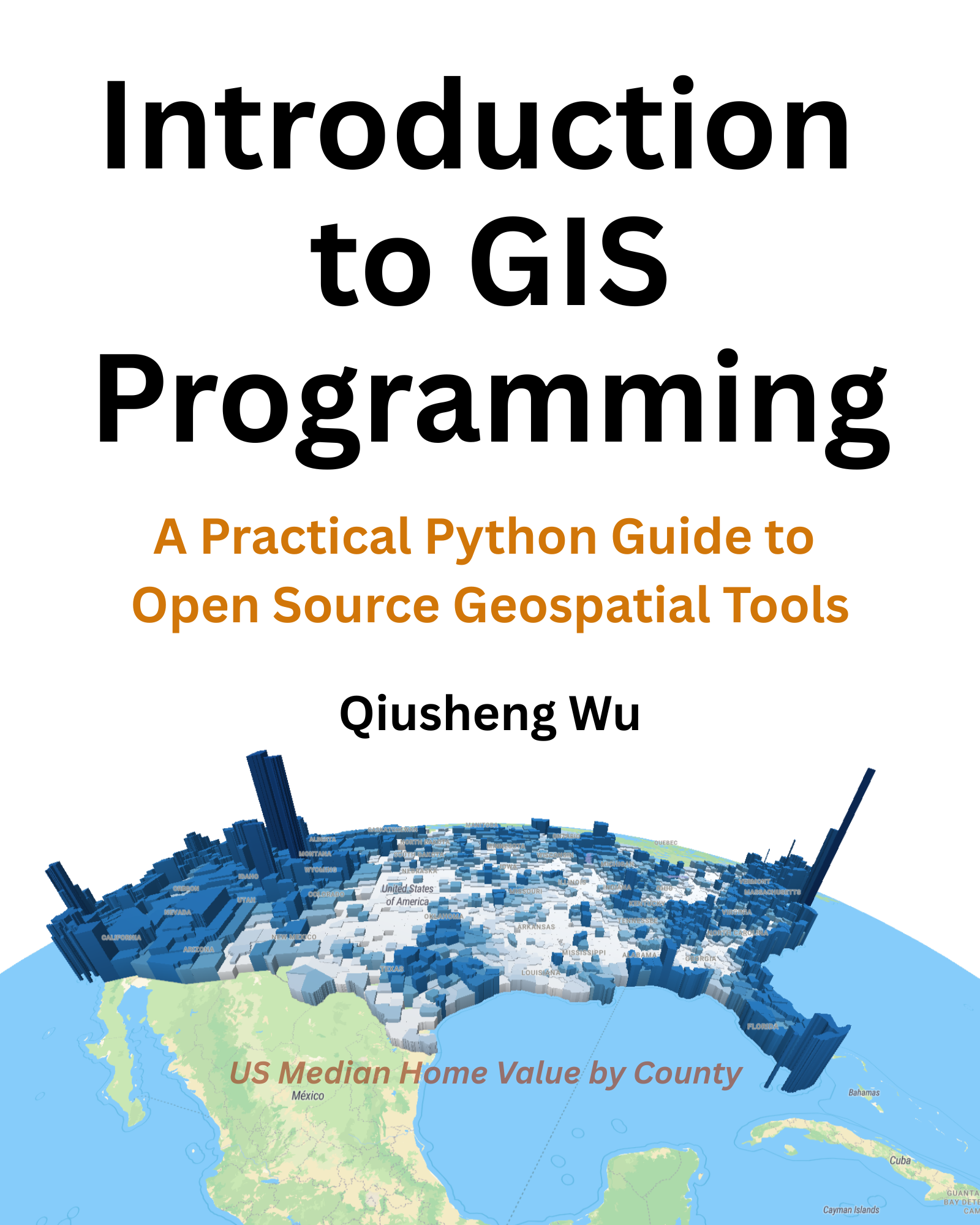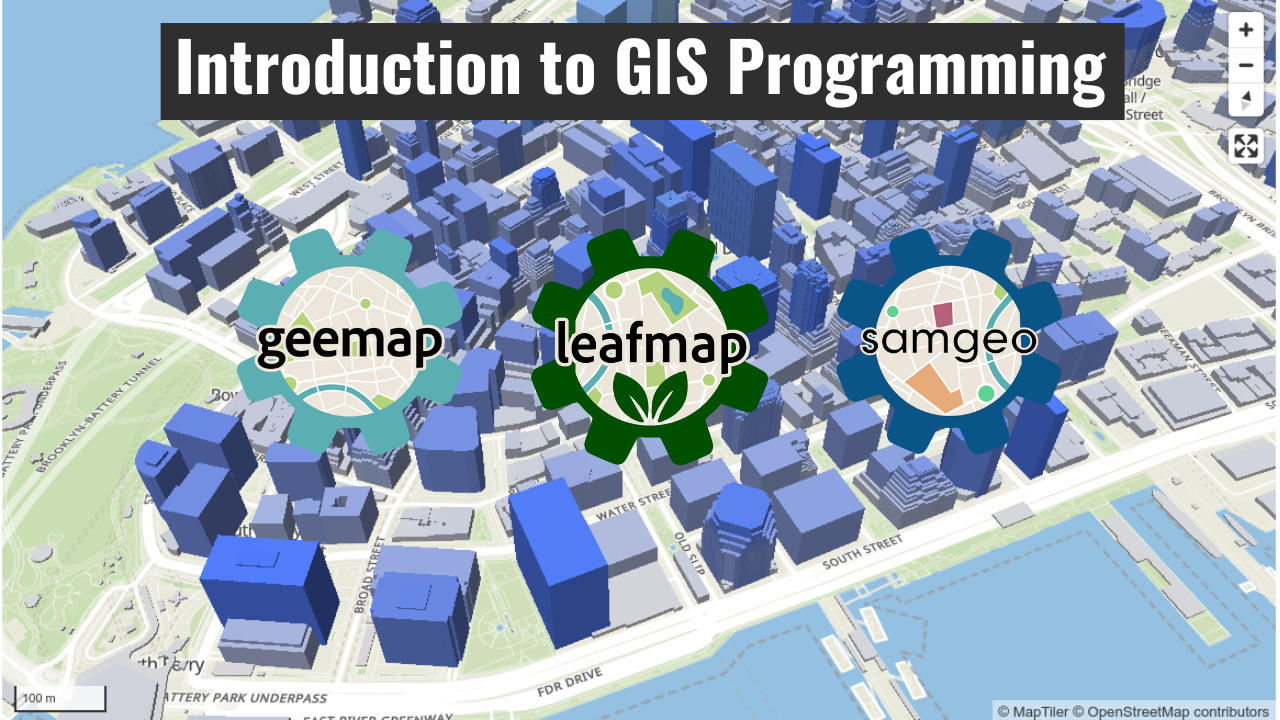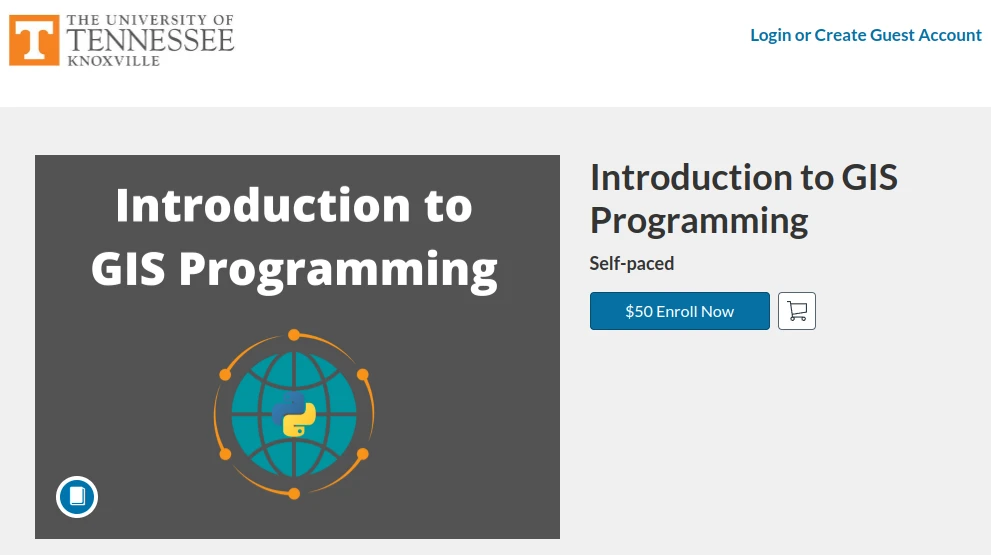Welcome to the official course website for "Introduction to GIS Programming," offered at the University of Tennessee, Knoxville.
This course offers a comprehensive exploration of GIS programming, centered around the Python programming language. Throughout the semester, students will master the use of Python libraries and frameworks essential for processing, analyzing, and visualizing geospatial data.
Wu, Q. (2025). Introduction to GIS Programming: A Practical Python Guide to Open Source Geospatial Tools. Independently published. ISBN 979-8286979455. https://amazon.com/dp/B0FFW34LL3
-
🇺🇸 Full-Color Print Edition (556 pages): Now available on Amazon (link)
-
🇺🇸 English PDF Edition (553 pages): Available on Leanpub (link)
-
🇨🇳 Chinese PDF Edition (540 pages): 中文电子版可在 Leanpub 购买 (link)
-
🇯🇵 Japanese PDF Edition (573 pages): 日本語版が Leanpub で利用可能 (link)
-
🇰🇷 Korean PDF Edition (555 pages): 한국어판 Leanpub에서 이용 가능 (link)
-
🇲🇽 Spanish PDF Edition (572 pages): Edición en español disponible en Leanpub (link)
-
🇫🇷 French PDF Edition (581 pages): Édition française disponible sur Leanpub (link)
-
🇵🇹 Portuguese PDF Edition (569 pages): Edição em português disponível na Leanpub (link)
-
🇮🇩 Indonesian PDF Edition (565 pages): Edisi bahasa Indonesia tersedia di Leanpub (link)
-
🇩🇪 German PDF Edition (582 pages): Deutschsprachige Edition auf Leanpub verfügbar (link)
-
🇷🇺 Russian PDF Edition (599 pages): Российская версия на Leanpub доступна (link)
-
Fundamentals of Python: Start with the basics—variables, data types, data structures, string operations, looping, and control statements. Progress to more advanced topics, including functions, classes, file handling, and exception handling.
-
Geospatial Applications: Delve into Python’s application in the geospatial realm. Learn to create interactive web maps using Leafmap, visualize vector and raster data, and explore 3D mapping with MapLibre. You'll also get hands-on experience with a number of specialized geospatial libraries, including GeoPandas, Rasterio, Xarray, Rioxarray, Leafmap, Whitebox, MapLibre, Geemap, SAMGeo, HyperCoast, DuckDB, and more.
-
Hands-On Experience: Engage in practical labs and projects designed to reinforce the concepts covered in lectures. These activities culminate in a final project where you'll apply your skills to a real-world geospatial problem.
By the end of the course, you will have a robust understanding of Python programming, specifically tailored to geospatial analysis and visualization, empowering you to confidently tackle various geospatial challenges.
All course materials, including lecture videos, are freely available on the course website: geog-312.gishub.org.
The lecture videos are available as a YouTube playlist: https://bit.ly/intro-gis-programming
Please note that you can access the course materials and lecture videos on the course website without enrolling in the course. However, if you're interested in submitting lab assignments, receiving grades, and earning a certificate of completion, you can enroll in the course at any time by clicking the link below. There is no deadline for enrollment, and you can complete the course at your own pace.


